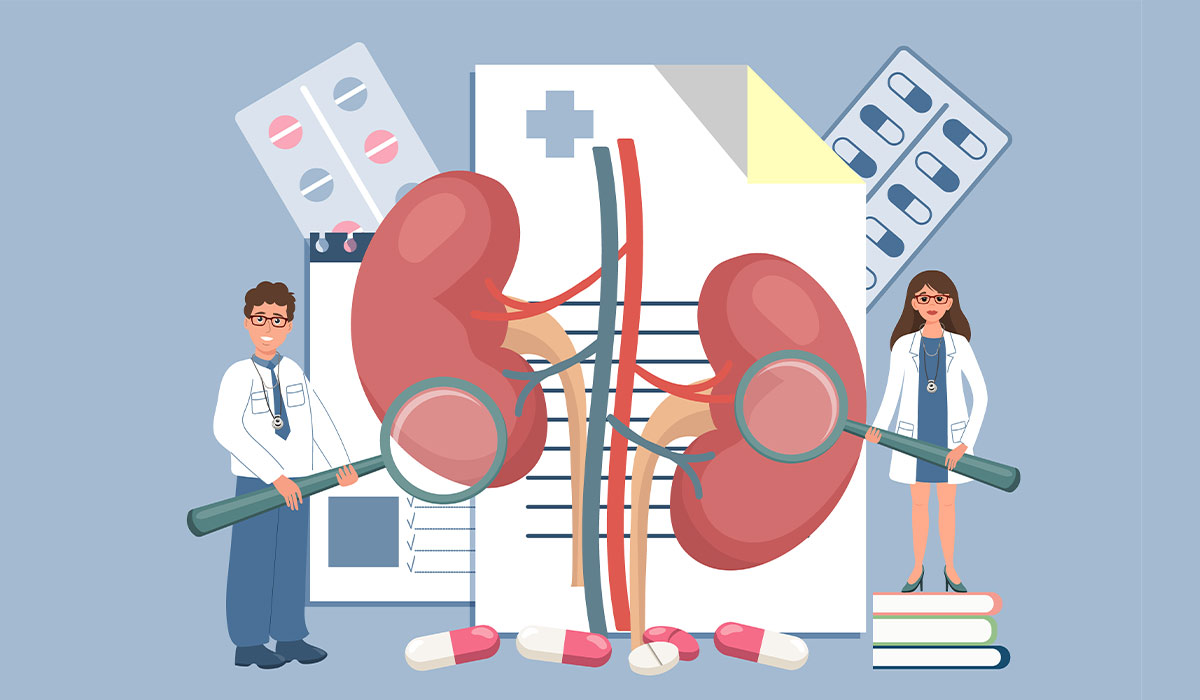Bilirubin is a bile pigment formed in the human body. A test to determine its level in the blood is instrumental. It is possible to diagnose many diseases. Measurement of the bilirubin index is performed on doctor's orders for control or diagnosis of diseases. Bilirubin is formed during the breakdown of hemoglobin.
It first enters the plasma. Then it travels by blood to the liver. Then bilirubin is excreted into the bladder. Bilirubin is excreted from the human body precisely through it, from where it is transported to the intestine through bile ducts. The excretion of bilirubin causes the urine to be colored yellow, and the stool under its influence takes on a darker color. This is the whole process of bilirubin use. We need the right level of bilirubin so we can function properly. That's why it's worth getting diagnosed to avoid many liver-related and other diseases.
Testing bilirubin levels can sometimes be very helpful. It helps detect many different diseases. The results of the bilirubin test need to be interpreted by a doctor. In some cases, bilirubin testing is essential. Bilirubin is tested especially in newborns. However, adults also need to test their bilirubin levels. So when is bilirubin tested?
These are cases that require testing of bilirubin levels![]() . This makes it possible to diagnose accurately regarding the diseases in question. This examination allows the detection of various types of disorders of these organs and the preliminary determination of their causes.
. This makes it possible to diagnose accurately regarding the diseases in question. This examination allows the detection of various types of disorders of these organs and the preliminary determination of their causes.
The bilirubin test involves a single blood draw![]() from the elbow vein, with the patient fasting for at least eight hours before the test. But remember that before the test you should tell the doctor about your medications. They may affect the test results obtained. The test should be performed in the morning, then the results are more accurate and it is easier to maintain fasting status. Bilirubin levels in newborns should be tested in the first 24 hours of life.
from the elbow vein, with the patient fasting for at least eight hours before the test. But remember that before the test you should tell the doctor about your medications. They may affect the test results obtained. The test should be performed in the morning, then the results are more accurate and it is easier to maintain fasting status. Bilirubin levels in newborns should be tested in the first 24 hours of life.
Testing bilirubin levels is a basic liver function test. There are different types of measurements, the most common is to draw and test blood. Serum or plasma is tested. However, often a urine sample![]() is also used for testing. Of significance is the concentration of urobilinogen in serum and urine.
is also used for testing. Of significance is the concentration of urobilinogen in serum and urine.
These tests are very useful. Providing a lot of information about the function and condition of the liver and bile. This facilitates the prognosis and monitoring of chronic diseases. Test results must always be discussed with a specialist. They are interpreted through an interview with the patient.
Sometimes a urine bilirubin level test is more advisable. Your doctor may suggest you this type of test because of regular checkup. But also when there are various problems with the bile ducts. Then some symptoms may occur. Symptoms may be related to the digestive system. Like vomiting, nausea, lack of appetite, abdominal pain. But also fatigue and weakness, swelling of the ankles and legs or itching.
Ailirubin in the urine can be a sign of liver damage![]() . Diseases in which there is a risk of liver damage include diabetes and hepatitis. Obesity and frequent alcohol consumption increase this risk. This is why this type of testing is also important. They can quickly pinpoint the source of ailments.
. Diseases in which there is a risk of liver damage include diabetes and hepatitis. Obesity and frequent alcohol consumption increase this risk. This is why this type of testing is also important. They can quickly pinpoint the source of ailments.
Bilirubin levels can depend on many different factors. Newborns and pregnant women can have higher bilirubin levels. In connection with hormonal changes. Then it is a completely natural condition. But sometimes a higher level of bilirubin can be dangerous. High total bilirubin is always a worrying symptom that should not be ignored.
For newborns it is different. Then the exact age of the child is of greatest importance. In general, an increase in bilirubin above 15 mg/dl becomes toxic to the newborn. An excess of indirect bilirubin, unbound to albumin, is toxic to the body. An unconjugated bilirubin can penetrate the blood-brain barrier. It can lead to nerve cell damage. Especially high levels of indirect bilirubin require immediate treatment. When bilirubin is elevated, additional tests should be done.

Elevated bilirubin levels can indicate the following diseases![]() : Gilbert syndrome, Dubin syndrome, Crigler-Najjar syndrome, cirrhosis, hemolysis. Depending on the diagnosis, different types of measures are taken. Some of these diseases are genetically inherited.
: Gilbert syndrome, Dubin syndrome, Crigler-Najjar syndrome, cirrhosis, hemolysis. Depending on the diagnosis, different types of measures are taken. Some of these diseases are genetically inherited.
Hyperbilirubinemia![]() is the name for high bilirubin levels. The reasons for hyperbilirubinemia vary. The liver may be unable to produce enough bilirubin. Then occasionally the liver may produce too much, in which case the level increases significantly. Also overproduction of bilirubin is possible with blood disorders. For example, hemolytic anemia destroys red blood cells. Which ultimately causes increased bilirubin levels. One more reason could be insufficient cleansing of the biliary system.
is the name for high bilirubin levels. The reasons for hyperbilirubinemia vary. The liver may be unable to produce enough bilirubin. Then occasionally the liver may produce too much, in which case the level increases significantly. Also overproduction of bilirubin is possible with blood disorders. For example, hemolytic anemia destroys red blood cells. Which ultimately causes increased bilirubin levels. One more reason could be insufficient cleansing of the biliary system.
When bilirubin levels are high you may notice typical symptoms of jaundice in yourself. They are a yellow coloration of the skin and whites of the eyes . The appearance of these symptoms should prompt a blood bilirubin level test. Other symptoms![]() also include stronger and darker colored urine or light colored feces. On the other hand, very high bilirubin levels usually cause itching.
also include stronger and darker colored urine or light colored feces. On the other hand, very high bilirubin levels usually cause itching.
What about low bilirubin levels? Is it dangerous? Bilirubin levels below normal are very rare. It usually does not indicate any diseases. However, a very low bilirubin result can suggest the immune system – sarcoidosis. The symptoms typical of jaundice can also appear then. Like yellowing of the skin or/and eyes. But then the bilirubin level is not too high but too low.
There are many studies and researches about bilirubin levels. Some researchers say that low bilirubin levels may contribute to coronary artery disease![]() . There are also suspicions that bilirubin levels may be lower in seasonal depression. Bilirubin is a very important component for the human body. Therefore, it is best when it is within the age-specific norm.
. There are also suspicions that bilirubin levels may be lower in seasonal depression. Bilirubin is a very important component for the human body. Therefore, it is best when it is within the age-specific norm.

It's hard to indicate the exact number of too-high bilirubin levels. Results can vary because people are different. At different ages, bilirubin levels can vary. It can be affected by hormones and other factors. However, there are some extreme values that can indicate danger.
But we can confirm that 50 mg/dl is too high. Even 40 mg/dl may be too high. In contrast, infants with 30mg/dl have not been found to have excessive bilirubin levels. However, sometimes risks and worrisome symptoms can occur with lower bilirubin results. Therefore, testing bilirubin levels is the first step to a proper diagnosis. However, other tests are usually also needed. Each patient requires an individual medical treatment and approach.
Testing bilirubin levels is necessary in newborns. In order to protect our children from the first minutes of their life, it is useful to have knowledge of what can affect increased bilirubin levels in them. Some things do not affect bilirubin levels, although it may seem otherwise. The type of birth does not depend on bilirubin levels. Therefore, the method of natural delivery or cesarean section does not matter here. Even late prematurity should not be of concern, as it has been proven that it does not raise bilirubin levels in newborns.
When it comes to feeding babies, we should not worry about the method of feeding but rather about delayed feeding. The delayed first feeding and the high concentration of bilirubin in the mother's umbilical cord – These two things had a significant effect on increasing bilirubin levels![]() . In the situations, there is a risk of later hyperbilirubinemia in newborns.
. In the situations, there is a risk of later hyperbilirubinemia in newborns.

The name bilirubin, which in Latin refers to the color yellow and red, was introduced in 1864. Today, testing bilirubin levels is a very important medical test. Especially for newborns, then it is even a required test that should be carried out preferably on the baby's first day of life. Newborns have higher bilirubin levels than adults. This is because the liver of the newborn and does not yet have the full capacity to process bilirubin. Within a few days, bilirubin production normalizes on its own.
Unconjugated bilirubin can damage the newborn's brain. When bilirubin levels are high, the baby may need to be treated. However, in adults, it is also worth testing bilirubin levels. This can detect diseases and direct the patient more quickly for further tests. There are diseases associated with obstruction of the bile ducts, the typical symptoms of which are high bilirubin levels.
When jaundice gives specific symptoms, then it is best to test your bilirubin levels as soon as possible. Most often, the more dangerous bilirubin level is higher than the norm predicts. Lower bilirubin levels are usually harmless, but watch out for cases where they also suggest the presence of disease.
Table of Contents

Jaundice is a disease symptom that involves yellowing of the skin, mucous membranes and sclera. What are its causes? How… read more »

Cirrhosis of The Liver is a condition where the liver is damaged and liver function is impaired. The most common… read more »

Fatty liver is a condition in which fat builds up inside the liver. It usually doesn't cause symptoms and is… read more »

Hemoglobin is an important part of the blood. Its deficiency as well as excess negatively affects health. Learn about the… read more »

Dehydration can cause many negative health effects. It is a common problem in children and seniors. Learn how to recognize… read more »

The liver is part of the digestive system. It performs over 500 functions in the body. It is impossible to… read more »

Hydronephrosis is a disease that can have serious complications. Find out how to recognise the condition so that appropriate treatment… read more »

Anaplasmosis is a systemic infectious disease transmitted by ticks. It can be as dangerous as Lyme disease. Read the article… read more »

Liver cancer is a tumor that is found in the liver. The most common symptoms include jaundice, unexpected weight loss,… read more »